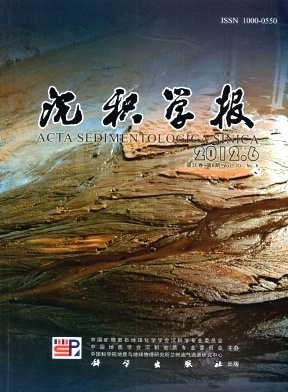Matching Relationship Between Faults and Source Rock and Vertical Migration Characteristics of the Oil in the Malang Sag
- Publish Date: 2012-12-10
-
Key words:
- transporting fault
Abstract: There are three types of crude oil in the Malang sag, Santanghu Basin. Type Ⅰ oil is from the source rocks of Permian Lucaogou Formation. Type Ⅱ oil is from the source rocks of Carboniferous Haerjiawu Formation and type Ⅲ oil is mixed source oil of type Ⅰ oil and type Ⅱ oil. Based on the study of the intensity of faults activity and the matching relationship between vertical transporting faults and the source rock, and then combined with the analysis data of nitrogen compounds, vertical migration characteristics of the oil in the Malang sag are studied in this paper. The research results are as follows. Firstly, the vertical migration ability of the oil is controlled by the intensity of faults activity, and the oil can accumulate in the overlying strata by migrating when the vertical transporting faults match the source rock well. When there are only vertical transporting faults or there is only source rock, oil can not accumulated in the overlying strata. The Jurassic was broken through by the vertical transporting faults nearby the thickness center of the Permian Lucaogou Formation source rock, so type Ⅰ oil which was generated by the source rock of the Lucaogou Formation could accumulate in the Jurassic through migration. The Permian and Jurassic were not broken by most faults nearby the Carboniferous Haerjiawu Formation source rock, so type Ⅱ oil which was generated by the source rock of the Carboniferous Haerjiawu Formation could not accumulate in the Permian and Jurassic, and it only accumulated at the top of Carboniferous. Besides, combined with the analysis of transporting faults, nitrogen compounds can trace hydrocarbon vertical migration well. The absolute concentration of nitrogen compounds in the crude oil is gradually reduced. And nitrogenshielded isomers are more enriched than parts of nitrogenshielded isomers and nitrogenexposed isomers from the deep to the shallow strata. For example, the value of 1,8DMC/1,3DMC and 1,8DMC/2,4DMC both are increased from the deep to the shallow strata. These parameters all trace the hydrocarbon vertical migration through the transporting faults from the deep to the shallow strata well.
| Citation: | Matching Relationship Between Faults and Source Rock and Vertical Migration Characteristics of the Oil in the Malang Sag[J]. Acta Sedimentologica Sinica, 2012, 30(6): 1140-1148. |






 DownLoad:
DownLoad: